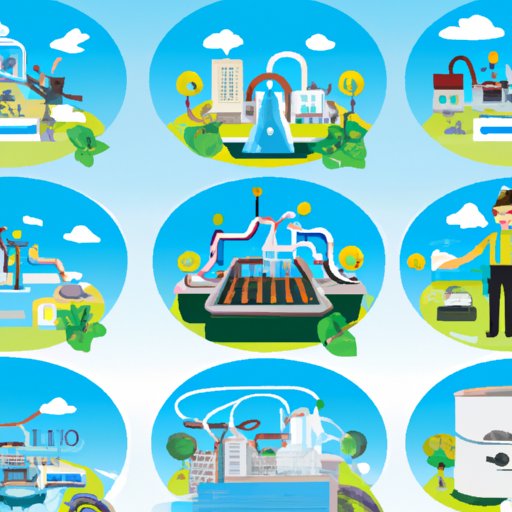Introduction
Environmental technology, also known as “green technology,” is a broad term that refers to any technology used to protect or restore the environment, as well as to improve its functionality. It encompasses a wide range of activities, from renewable energy sources such as wind and solar, to waste management systems, to water treatment and air quality monitoring. Environmental technology has become increasingly important in recent years as the world grapples with the effects of climate change and the need to reduce emissions.
The benefits of environmental technology are numerous. By reducing emissions, it can help combat climate change. It can also reduce pollution, conserve resources, and create jobs. However, there are also challenges associated with environmental technology, such as high costs and limited access to resources. In this article, we will explore environmental technology in more detail, including how it works, what it can do, and the impact it can have on the environment.

A Primer on Environmental Technology
Environmental technology is a broad term that encompasses a variety of activities, from renewable energy sources to waste management systems. It is designed to reduce emissions, conserve resources, and improve the overall health of the environment.
At its core, environmental technology is about finding ways to use natural resources more efficiently. This often involves the use of renewable energy sources, such as wind and solar, as well as waste management systems, which can help reduce the amount of pollution produced by human activities. Other forms of environmental technology include water treatment and air quality monitoring, both of which can help reduce pollution levels and improve the health of the environment.

Types of Environmental Technologies and Their Applications
Renewable energy is one of the most common forms of environmental technology. Renewable energy sources such as wind, solar, and geothermal can provide clean, reliable energy without producing harmful emissions. Additionally, they can be used to generate electricity and heat buildings, making them an ideal source of energy for homes and businesses.
Waste management is another important form of environmental technology. Waste management systems can help reduce the amount of pollution produced by human activities, as well as prevent contamination of soil and water. These systems can also be used to recycle materials, which can lead to greater resource efficiency.
Water treatment is another form of environmental technology. Water treatment systems can help reduce pollutants and contaminants in water, making it safe to drink and use for other purposes. Additionally, water treatment systems can be used to purify wastewater, enabling it to be reused for irrigation or other purposes.
Air quality monitoring is another important form of environmental technology. Air quality monitors can detect pollutants in the air, allowing governments and businesses to take action to reduce their impact. Additionally, air quality monitors can be used to detect and monitor airborne allergens, helping people with allergies stay safe and healthy.

The Impact of Environmental Technology on the Environment
The use of environmental technology can have a positive impact on the environment. By reducing emissions, it can help combat climate change. Additionally, it can reduce pollution levels, conserve resources, and create jobs. Furthermore, it can improve public health by reducing exposure to pollutants and allergens.
However, there are also potential negative impacts associated with environmental technology. For example, some renewable energy sources, such as large-scale solar farms, can have a negative impact on local ecosystems. Additionally, certain types of waste management systems can produce hazardous waste products that must be disposed of safely.
The Future of Environmental Technology
Green technology is becoming increasingly important as the world grapples with the effects of climate change and the need to reduce emissions. As such, governments and businesses are exploring emerging environmental technologies, such as carbon capture and storage, which can help reduce emissions. Additionally, governments are also investing in research and development to find new and innovative ways to reduce emissions.
Governments also have a role to play in promoting the use of environmental technologies. This can involve providing incentives for companies to invest in green technologies, as well as providing funding for research and development. Additionally, governments can provide educational programs to teach the public about the importance of environmental technologies.
Conclusion
Environmental technology is an essential tool for protecting and restoring the environment. It encompasses a variety of activities, from renewable energy sources to waste management systems, and it can have a positive impact on the environment. The future of environmental technology is bright, and governments have a role to play in promoting the use of these technologies. With continued investment, research, and education, environmental technology can help us achieve a more sustainable future.
(Note: Is this article not meeting your expectations? Do you have knowledge or insights to share? Unlock new opportunities and expand your reach by joining our authors team. Click Registration to join us and share your expertise with our readers.)
